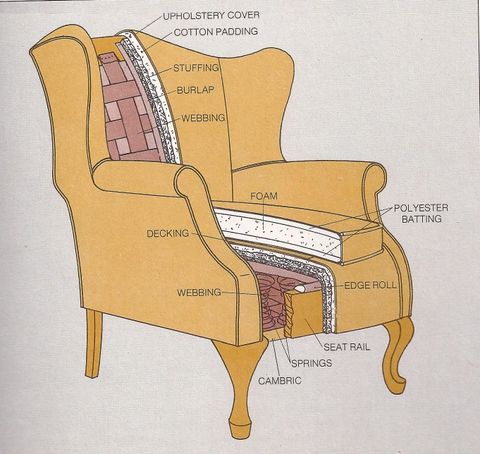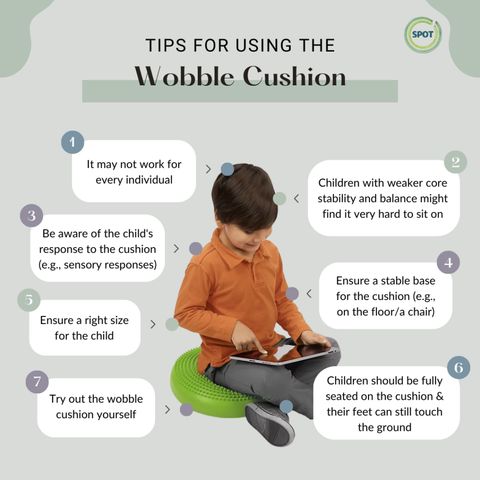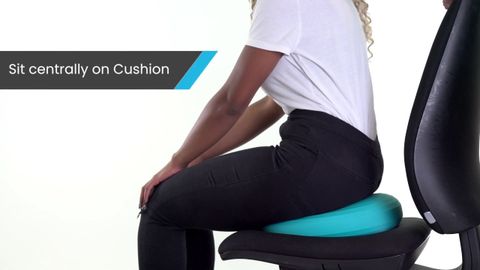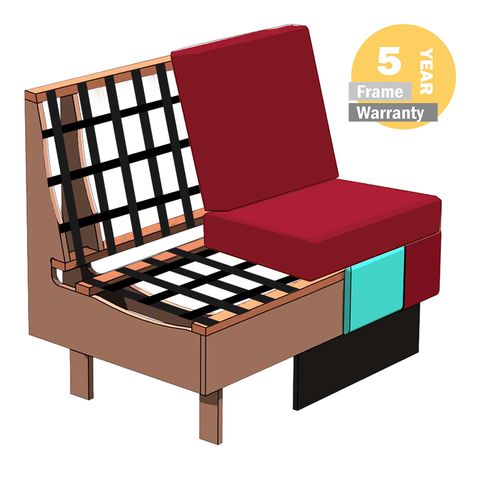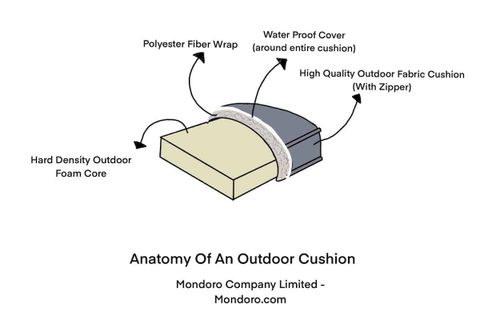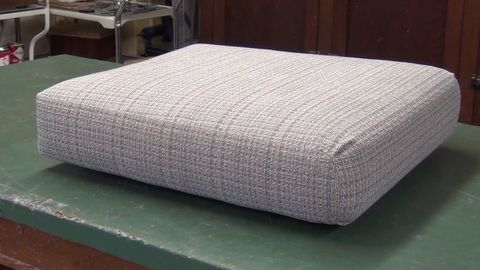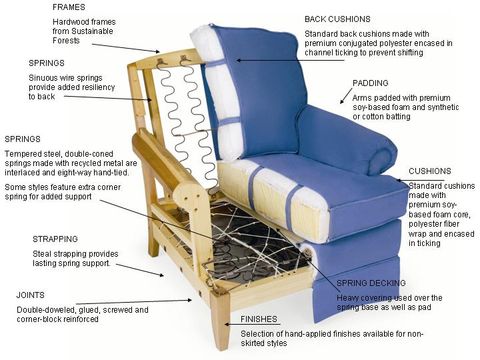Ever sat on a sofa and thought, ‘Wow, this is comfy?’ or perhaps, ‘Ouch, my back!’ Well, the secret to that comfort (or discomfort) lies deep within the cushion construction. Today, we’re going to pull back the curtain and explore the diverse techniques that go into making the cushions we love (and sometimes loathe). This isn’t just about the foam; it’s about the whole shebang – the springs, the fibers, the covers, and how they all work together. Get ready to see your furniture in a whole new light, and maybe even appreciate that comfy chair a little more. And, and, we’ll be doing it without getting bogged down in tech-speak, keeping things clear and easy to get!
Cushions are everywhere. They’re on your couch, your car seats, your dining room chairs – you name it. They’re a fundamental piece of our everyday lives. But have you ever really thought about how they’re made? Most people don’t, and that’s perfectly fine. However, understanding the basics of cushion construction can empower you to make smarter purchasing decisions, extend the life of your furniture, and even appreciate the craftsmanship involved. This article is for anyone who wants to understand these vital components of your home furnishing, and how they all come together.
The Foundation: Springs, Straps, and Support Systems
Before we even get to the squishy stuff, let’s talk about the foundation. The support system is the skeleton of your cushion. It’s what gives it shape and provides the initial support. There are several different types of support systems, each with its own pros and cons:
- Springs: These are the classic. Coil springs (like those in an old-school mattress) offer good support and bounce. Pocket springs, where each spring is individually wrapped, provide better contouring and reduce motion transfer. The quality of the springs, and how they’re connected, really makes a difference.
- Webbing: This involves a network of interwoven straps, typically made of rubber or synthetic materials. It’s common in modern furniture, and can offer a firm, supportive base.
- Sinuous Springs (Zig-Zag Springs): These are ‘S’-shaped wires that are attached to the frame. They’re a popular choice for their affordability and durability.
- Solid Platforms: Some cushions sit on a solid platform, usually made of wood or a composite material. This provides a very firm base, which might be combined with other elements to provide a more comfortable feel.
Thinking about the base is essential, and it’s a good idea to consider it when buying furniture.
Foam 101: The Core of Comfort
Foam is the most common filling material. It comes in a wide range of densities and firmness levels. Density refers to the weight of the foam per cubic foot; higher density usually means a more durable and supportive cushion. Firmness is, well, how firm the foam feels. You’ll find everything from super-soft to rock-hard. Here’s a quick rundown:
- Polyurethane Foam: This is the workhorse of the cushion world. It’s affordable, versatile, and comes in many different grades.
- Memory Foam: Known for its pressure-relieving properties, memory foam molds to your body shape. It’s great for those looking for extra comfort.
- Latex Foam: Made from the sap of rubber trees, latex foam is naturally resilient and offers good support. It’s a more expensive option.
When choosing foam, consider your needs. Do you want a soft, sink-in feel or something more firm? Do you need extra support for your back? Think about these questions before you buy.
Fiber Fillings: Adding the Fluff Factor
While foam provides the core support, fiber fillings add the fluff, the plushness, and the ‘sink-in’ feeling. These fibers are usually layered on top of the foam. Common types include:
- Polyester Fiber: A popular choice for its affordability and resilience. It bounces back well after compression.
- Down and Feather: This gives a luxurious, soft feel. It requires more maintenance (fluffing) to keep its shape. And, and it’s a good idea to consider the source of the feathers.
- Blends: Many cushions use a blend of fibers to achieve a specific feel, like a mix of foam and fiber fill for balance.
These fillings are often wrapped around the foam core, creating a more comfortable, and better-shaped cushion. It’s the stuff that makes you want to curl up and relax.
The Envelope: Fabric, Stitching, and Style
The cover is the final, visible layer. It’s not just about looks; the fabric choice impacts durability, comfort, and the overall feel. Key things to consider:
- Fabric Type: Fabrics like cotton, linen, and blends are breathable and comfortable. Synthetic fabrics like microfiber are durable and stain-resistant.
- Stitching: Quality stitching ensures the cover holds its shape and withstands wear and tear.
- Construction: Look for features like welted edges (a decorative seam that adds durability), and zippers for easy removal and cleaning. This is where design and function meet.
Think about how you’ll use the furniture. If you have kids or pets, you’ll want a durable, easy-to-clean fabric. If you want something luxurious, you might choose velvet or leather.
Construction Techniques: Putting it all Together
There are various methods used to assemble cushions. The construction technique impacts both the look and the feel. Here are some examples:
- Box Cushions: These are the most common, with a rectangular or square shape. They often have a foam core wrapped in fiber and covered with fabric.
- T-Cushions: These have a ‘T’ shape, with a longer section for the seat and a shorter one that forms the armrest. They’re often used on sofas.
- Button-Tufting: This technique involves pulling the fabric through the cushion and securing it with buttons, creating a decorative and supportive effect.
The best construction technique depends on the furniture’s design and the desired comfort level. A well-made cushion will hold its shape and provide support for years to come. And, and, that’s a good thing.
Caring for Your Cushions: Extending Their Lifespan
Proper care can significantly extend the life of your cushions. Here are some tips:
- Rotate and Fluff: Rotate cushions regularly to ensure even wear. Fluff them frequently to maintain their shape.
- Vacuum Regularly: Vacuum your cushions to remove dust, dirt, and pet hair.
- Spot Clean Spills Immediately: Address spills promptly to prevent stains from setting in. Check the fabric’s care instructions.
- Professional Cleaning: Consider professional cleaning for deep cleaning and stain removal, especially for delicate fabrics.
By following these simple steps, you can keep your cushions looking and feeling great for years to come. And, and, that’s a win-win situation.
Now you know more about what goes into crafting the cushions you use every day. From the foundation to the finishing touches, each component plays a vital role in creating comfort and support. The next time you sit down on your sofa, take a moment to appreciate the work and the materials that went into making it. Understanding the details of cushion construction empowers you to make informed decisions, extend the life of your furniture, and appreciate the craftsmanship that brings comfort to your home. It’s more than just foam and fabric; it’s about the art of making a comfortable life. And, and, that’s something to be proud of.

